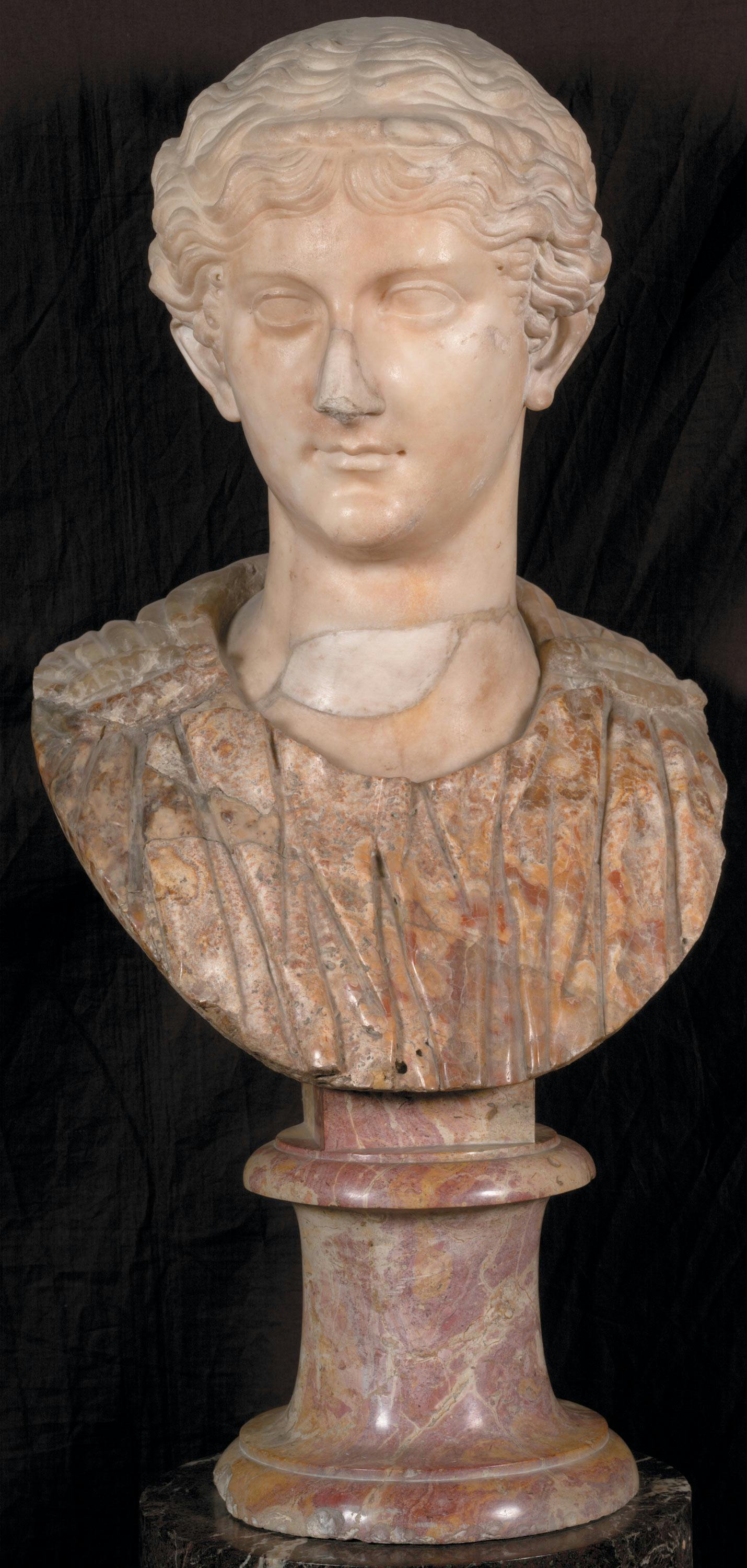Portrait of Antonia the Younger (identified as Agrippina the Elder)
Roman art
The idealized features of this face and its larger-than-life dimensions identify it as an official portrait, while the hairstyle, with the hair divided into soft waves by a central parting and gathered behind the nape of the neck to form a chignon, enables us to date it to the Julio-Claudian dynasty (27 BC - 68 AD). The matron depicted here, initially identified as Agrippina the Elder, niece of Augustus and wife of Germanicus, has more recently been identified, based on certain physiognomic features - the elongated oval face shape, ending in a pointed chin, small mouth and thin lips - as Antonia the Younger, daughter of Mark Antony and Octavia, Augustus' sister.
The hairstyle shown here is compatible with that of the second known portrait type of this matron, created during the principality of her son Claudius, when she received the honorary title of Augusta. This was bestowed on her during her lifetime by her nephew Gaius Caligula, and she was only the second matron of the imperial house to bear it, following in the footsteps of her mother-in-law Livia, Augustus’ wife. Moreover, Antonia had been at the center of courtly life since her youth, when her marriage to Livia's son, Claudius Drusus, in 16 BC, had symbolized the union of the two souls of the imperial house, the Julius part and the Claudius part. Her first portrait type was probably created then, characterized by a ponytail, visible in the small pietra dura bust on display at the Treasury of the Grand Dukes Museum in Pitti Palace (inv. Gemme 1921 n.794). In the years that followed, first as Tiberius' esteemed sister-in-law and mother of his heir Germanicus, and then as grandmother of Prince Gaius, she was one of the dynasty's leading female figures, yet managed to maintain a perfect balance between the ancient matronly ideal and the new position of power, so becoming a role model for subsequent generations.
The portrait is attributed to a Roman workshop; the head was added, in a restoration intervention, to an original bust made of two parts: an ancient woman’s bust in Greek marble, and a post-ancient part reproducing the robe, in onyx.
